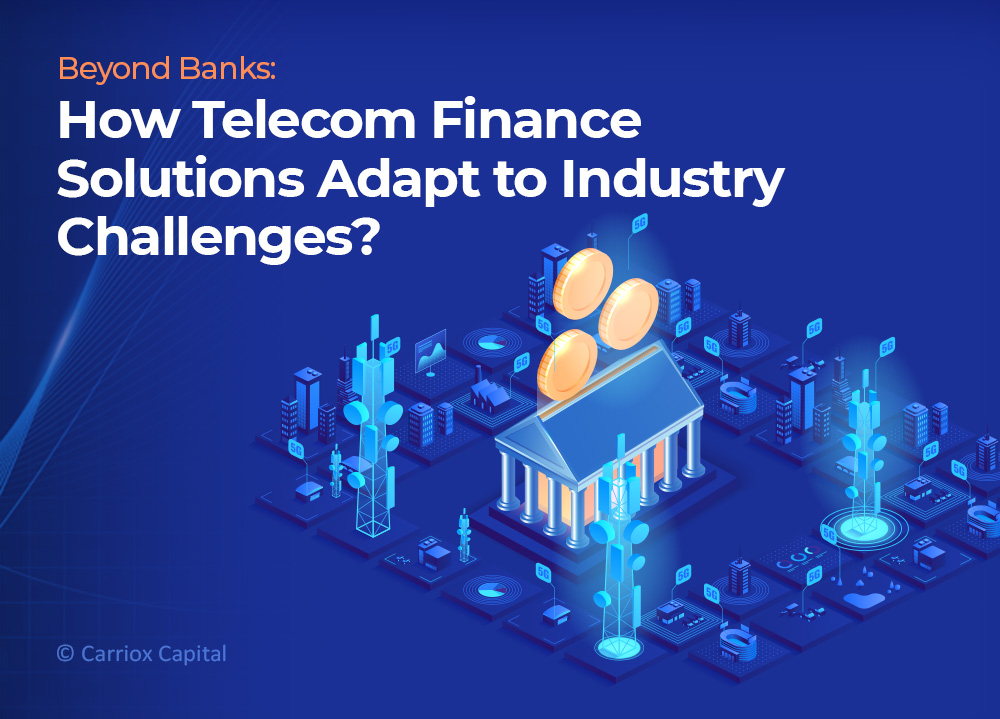Traditional Loans to Invoice Factoring: A Telecom Finance Showdown

The seamless connectivity our digitally interconnected world demands propel telecom companies into a perpetual cycle of expansion, technological upgrades, and regulatory adaptations. Amidst their operations’ towering expectations and capital-intensive nature, telecom operators, cell tower companies, carriers, and sub-contractors encounter hurdles that necessitate a departure from conventional financing models and exploration of tailored solutions like cell tower infrastructural financing.
In 2022, the worldwide count of smartphone mobile network subscriptions surged to nearly 6.4 billion, projected to surpass 7.7 billion by 2028. This astronomical growth underscores the urgency for nimble financial solutions as traditional loans, burdened with protracted approval processes and stringent collateral demands, struggle to keep pace with the relentless demands of an ever-expanding network infrastructure.
Here, innovative solutions like telecom invoice factoring and vendor financing emerge as strategic lifelines for telecom companies. These alternatives offer agility and liquidity, enabling swift adaptation to the demands of an evolving industry. Let’s explore the hurdles and transformations that have shaped the financial narrative of the telecom industry.
Addressing Finance Challenges in the Telecom Landscape
Understanding the hurdles surrounding cell tower infrastructural financing offers a perspective on how telecom companies undertake financial innovations and adaptive measures to fortify their operations.
Regulatory Challenges
Compliance demands continuous investment in legal counsel, regulatory audits, and adapting to new standards, impacting the bottom line. Moreover, penalties for non-compliance can be severe.
Infrastructure Costs
The deployment and maintenance of cell towers and network infrastructure strains financial resources. Upfront expenditures for equipment, site acquisition, and ongoing maintenance are substantial.
Rapid Technological Changes
The telecom sector is marked by rapid technological advancements, requiring constant research, development, and implementation investment. Companies must contend with the costs of upgrading networks, acquiring new equipment, and ensuring compatibility with evolving standards.
Creditworthiness and Risk Assessment
The industry’s dynamic nature, fluctuating revenues, and project timelines make traditional credit assessments less effective. Managing risks associated with market fluctuations and customer creditworthiness adds a layer of complexity to telecom finance.
These challenges significantly impede telecom companies’ capacity to invest in crucial equipment, seize business expansion opportunities, and sustain seamless daily operations and maintenance. However, specific financing options like telecom invoice factoring and discounting, equipment leasing, and equity financing emerge as strategic avenues, discussed in the next section.
Beyond Banks: The Evolution of Tailored Finance in Telecom
Beyond traditional banking institutions, the telecommunications industry has witnessed a transformative evolution in tailored financial instruments:
Traditional Loans
Historically, telecom companies have turned to traditional bank loans to secure capital for network expansions and infrastructure upgrades. However, the lengthy approval processes, strict collateral requirements, and standardized terms often hinder the agility required in the fast-paced telecommunications industry.
Bond Issuance
Bond issuance has been a famous avenue for telecom financing, allowing companies to raise capital by issuing bonds to investors. Telecom companies often opt for this route when undertaking large-scale projects or acquisitions. While bonds offer a long-term funding solution, they come with interest payments and stringent terms, adding a layer of financial complexity.
Sale and Leaseback
Sale and leaseback arrangements involve selling existing assets, such as rooftops and cell towers, to investors and then leasing back space on the towers for their radio units, antennae, etc. This financial strategy provides an injection of capital without losing access to critical infrastructure. Telecom companies leverage sale and leaseback to unlock the value of owned assets, redirecting funds into network expansion and technological advancements.
Revolving Credit Facilities
Revolving credit facilities offer a flexible financing option where telecom companies can access a predetermined credit limit as needed. This revolving line of credit provides financial agility, allowing companies to address immediate funding requirements without needing a specific project or asset as collateral. Telecom enterprises utilize revolving credit facilities to navigate cash flow challenges and seize timely opportunities.
Vendor Financing
Vendor financing is cell tower infrastructural financing involving collaboration between telecom equipment providers and operators to facilitate equipment purchases. This strategic partnership allows telecom companies to acquire cutting-edge technology without substantial upfront costs. Vendor financing agreements often feature flexible payment terms, aligning with the industry’s rapid technological evolution and minimizing the financial burden on telecom operators.
Project Financing
Project financing is a specialized approach where funds are secured based on the revenue-generating potential of a specific project. This model is commonly employed in the telecom sector for large-scale ventures such as network expansions. Project financing minimizes the impact on the overall balance sheet, ensuring the financial burden is tied directly to the project’s success.
Private Equity
Telecom companies seeking substantial capital injections turn to private equity investors. Private equity firms provide funds in exchange for equity ownership, facilitating strategic growth initiatives. While this avenue offers significant financial support, it comes with relinquishing partial control, requiring a delicate balance between economic gains and operational autonomy.
Telecom Invoice Factoring
Telecom invoice factoring is a financing solution tailored to the industry’s unique revenue cycles. This innovative approach involves selling accounts receivable, such as outstanding invoices, at a discount to a third-party financial institution. Telecom companies gain immediate working capital, addressing cash flow challenges and ensuring daily operations and maintenance progress. Telecom invoice factoring is a responsive option that aligns with the industry’s financial flexibility and agility needs.
Elevate Your Telecom Game: Transform Receivables into Network Advancements
In the dynamic landscape of telecom finance, strategic choices directly impact the industry’s growth trajectory. Telecom companies face multifaceted hurdles, from navigating regulatory challenges to managing infrastructure costs and embracing technological shifts. As we’ve examined diverse financial tools, it’s evident that telecom invoice factoring emerges as the best solution, offering immediate working capital by unlocking the cash tied up in receivables. The responsive nature of this financing option makes it well-suited for tackling cash flow challenges, ensuring financial flexibility for day-to-day operations, maintenance, and capitalizing on growth opportunities.
Carriox is a cell tower infrastructural financing company offering working capital solutions tailored exclusively for cell tower infrastructure construction and commissioning companies. Contact us for swift funding, minimal charges, and a seamless cash flow.

Nitisha Jain
Nitisha Jain is the Content Manager at Panamax with over 12 years of experience in the industry. She is passionate about creating high-quality, informative, and engaging content for various audiences. In her current role, Nitisha is responsible for developing and executing content strategies for a variety of projects, including blog posts, articles, social media posts, website content, email campaigns, and more. She ensures that all the content published is on-brand and consistent with the company's overall messaging.

